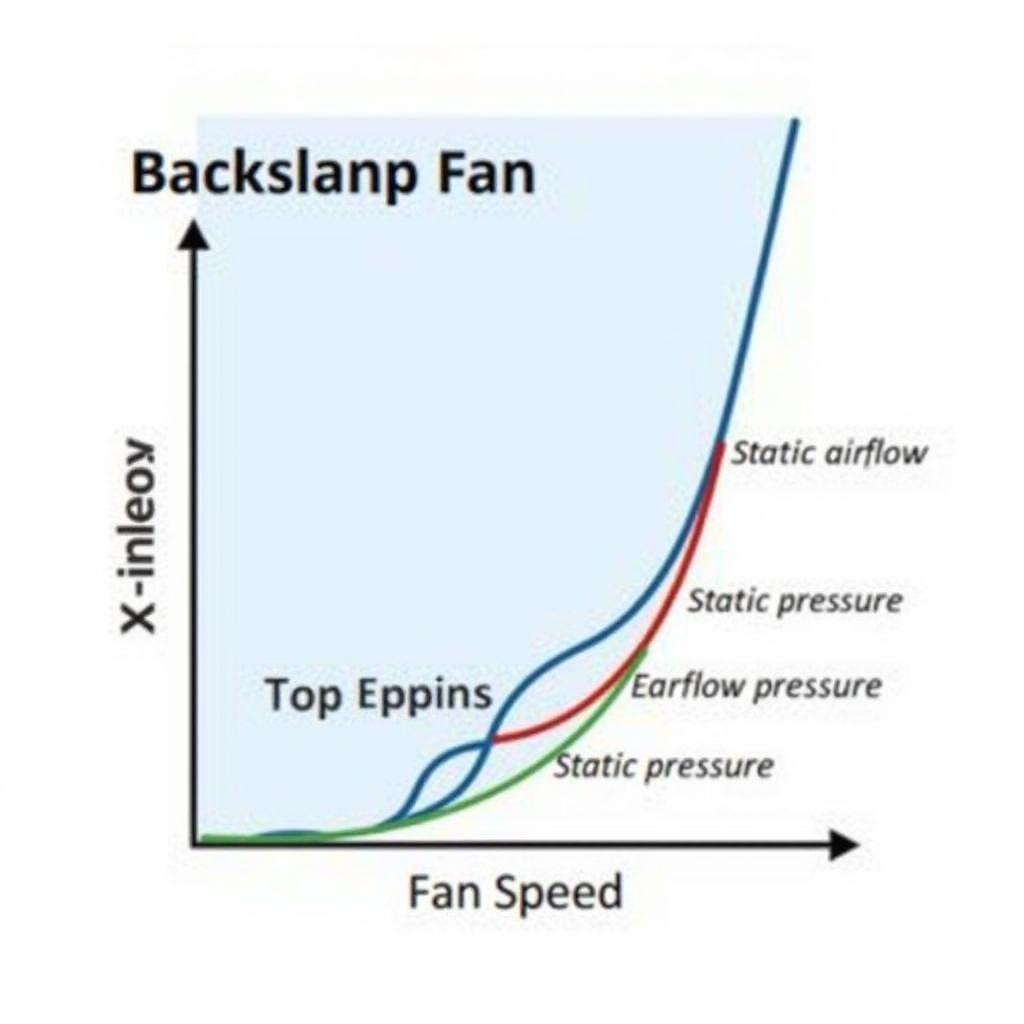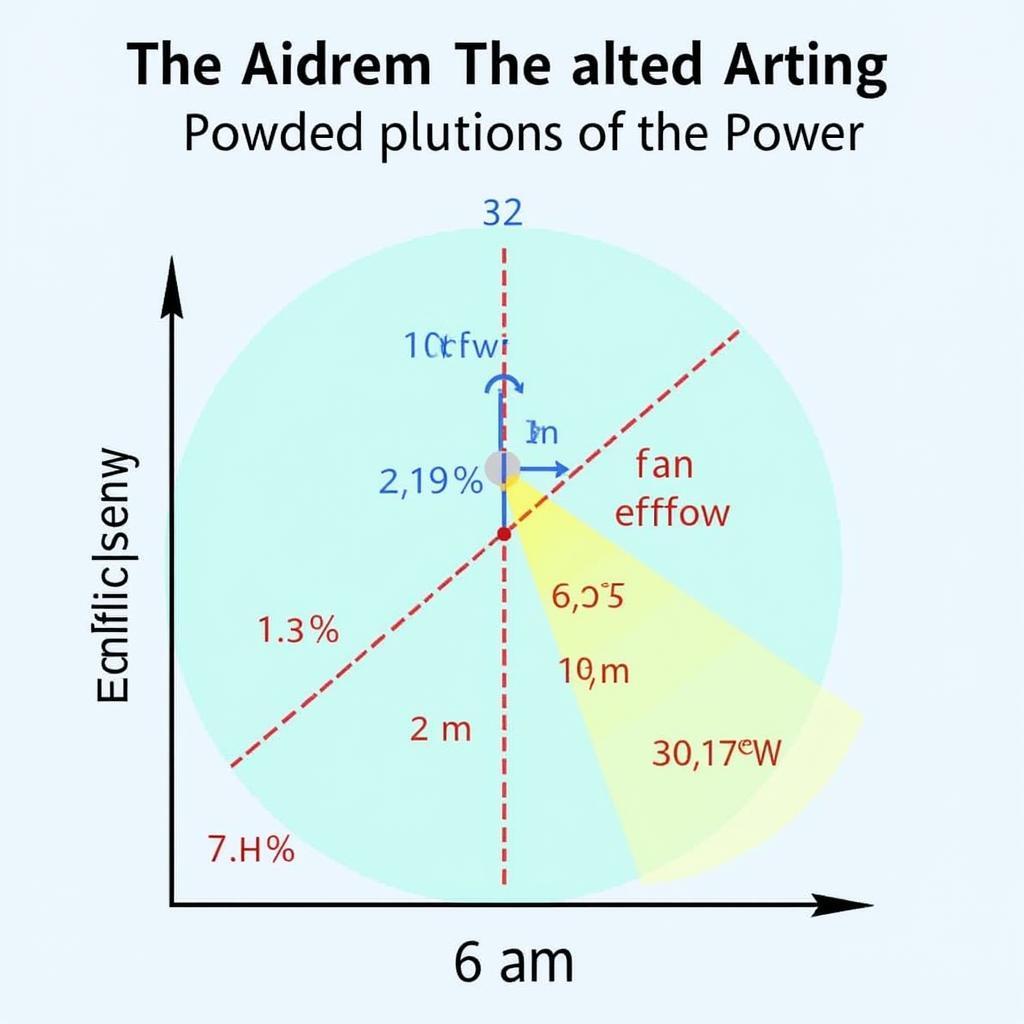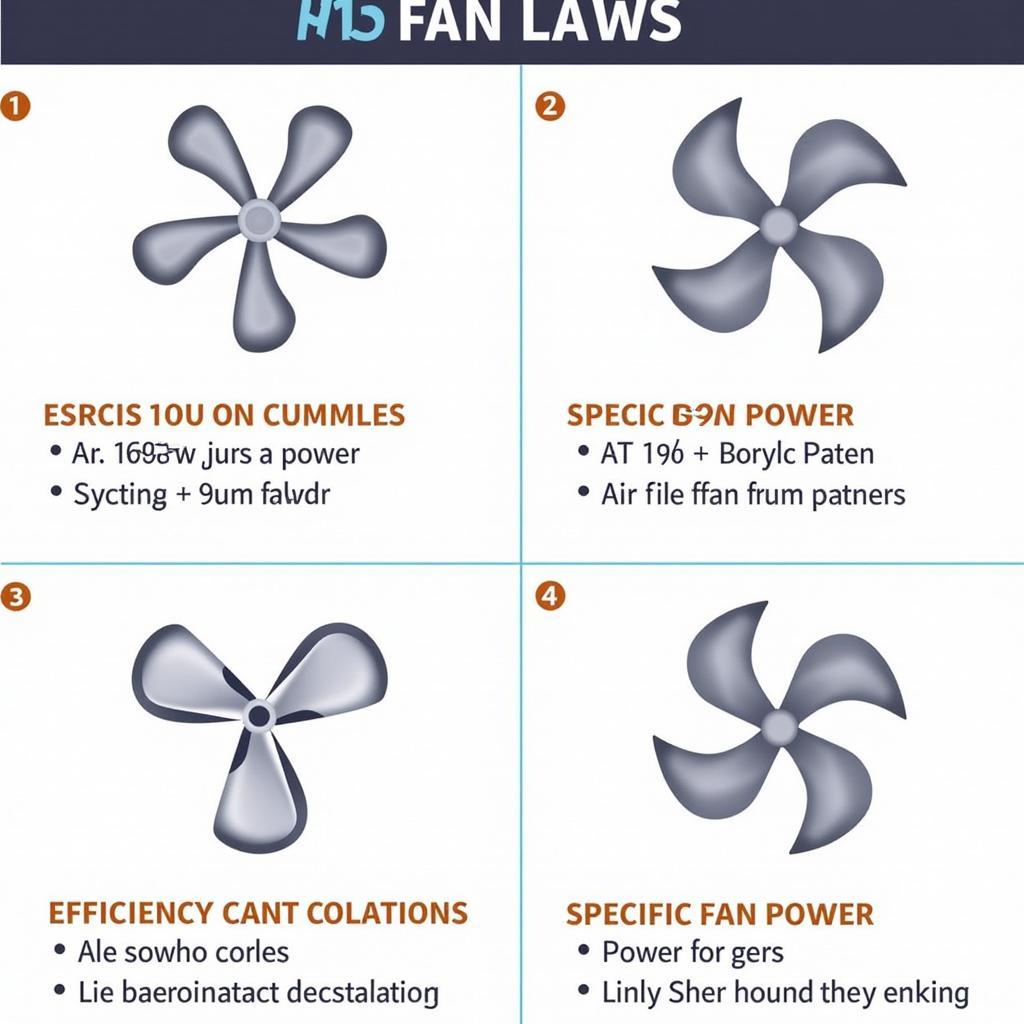Understanding fan laws and formulas is crucial for anyone working with fans, from HVAC engineers to data center managers. These principles govern how a fan performs under different conditions and allow for accurate performance calculations. This knowledge is essential for optimizing fan selection, controlling fan speed, and troubleshooting system issues.
 Fan Performance Curve Showing Airflow and Pressure
Fan Performance Curve Showing Airflow and Pressure
What are Fan Laws?
Fan laws describe the relationships between fan performance parameters like airflow, pressure, power, and speed. These laws are derived from the principles of fluid dynamics and are based on the assumption that the fan’s geometry remains constant. They provide a quick way to estimate how a fan’s performance will change when one or more of these parameters are adjusted.
Understanding the Affinity Laws (Fan Laws)
The most common fan laws are the affinity laws, which describe the relationship between fan speed and other performance characteristics:
- Airflow (Q): Airflow is directly proportional to fan speed. Doubling the speed doubles the airflow.
- Pressure (P): Pressure is proportional to the square of fan speed. Doubling the speed quadruples the pressure.
- Power (kW): Power is proportional to the cube of fan speed. Doubling the speed increases the power by eight times.
These relationships can be expressed mathematically as:
- Q2 = Q1 * (N2/N1)
- P2 = P1 * (N2/N1)^2
- kW2 = kW1 * (N2/N1)^3
Where:
- Q1, P1, kW1 represent airflow, pressure, and power at the initial speed (N1)
- Q2, P2, kW2 represent airflow, pressure, and power at the new speed (N2)
Other Important Formulas in Fan Performance Calculations
Beyond the affinity laws, several other formulas are important for understanding and calculating fan performance:
Air Power
Air power is the rate at which energy is transferred to the air by the fan. It is calculated as:
Air Power = Airflow * Pressure
Fan Efficiency
Fan efficiency measures how effectively a fan converts input power into air power. It is expressed as a percentage and is calculated as:
Fan Efficiency = (Air Power / Input Power) * 100%
Specific Fan Power (SFP)
Specific Fan Power is a measure of the electrical power consumed by a fan relative to the airflow it produces. It’s a useful metric for comparing the energy efficiency of different fans. It’s calculated as:
SFP = Input Power / Airflow
How are Fan Laws Used in Practice?
Fan laws are invaluable tools for a range of applications:
- Fan Selection: Fan laws help engineers select the right fan size and speed to meet specific airflow and pressure requirements.
- System Design: They are crucial for designing efficient HVAC systems and optimizing ductwork.
- Fan Control: Variable speed drives can be used to adjust fan speed based on demand, saving energy and reducing noise.
- Troubleshooting: Fan laws can help diagnose problems like low airflow or high power consumption.
 Fan Efficiency Chart Showing Airflow and Power
Fan Efficiency Chart Showing Airflow and Power
What are some common misconceptions about fan laws?
A common misconception is that fan laws apply universally to all fan types and operating conditions. However, it’s important to remember that these laws are based on certain assumptions, such as constant fan geometry and incompressible flow. Deviations from these assumptions can lead to inaccuracies.
“Understanding the limitations of fan laws is just as important as knowing how to apply them,” says Dr. John Smith, a leading expert in fluid dynamics. “While they provide valuable approximations, real-world factors can influence fan performance in ways that the simplified laws don’t fully capture.”
Conclusion
Fan laws and formulas are fundamental tools for understanding and predicting fan performance. While the affinity laws provide a simple starting point, a comprehensive understanding of other relevant formulas and their limitations is essential for accurate calculations and optimized fan operation. By applying these principles correctly, engineers and technicians can achieve efficient and reliable fan performance in a wide range of applications.
FAQ
- What are the three main fan laws?
The three main fan laws describe the relationship between fan speed and airflow, pressure, and power. - What is specific fan power (SFP)?
SFP is a measure of the electrical power consumed by a fan relative to the airflow it produces. - How are fan laws used in HVAC system design?
Fan laws help engineers select the appropriate fan size and speed to meet the system’s airflow and pressure requirements. - What are some limitations of fan laws?
Fan laws are based on idealized assumptions and may not accurately reflect real-world conditions, especially at extreme operating points. - How can I improve fan efficiency?
Optimizing fan speed, cleaning fan blades, and ensuring proper ductwork design can all improve fan efficiency. - Why is it important to understand fan laws?
Understanding fan laws allows for efficient fan selection, control, and troubleshooting. - Where can I find more information about fan performance calculations?
Resources like engineering handbooks and online calculators can provide more in-depth information about fan performance calculations.
 Fan Laws and Formula Cheat Sheet
Fan Laws and Formula Cheat Sheet
For further assistance, please contact us at Phone Number: 0903426737, Email: fansbongda@gmail.com Or visit our address: Lot 9, Area 6, Gieng Day Ward, Ha Long City, Gieng Day, Ha Long, Quang Ninh, Vietnam. We have a 24/7 customer support team.


